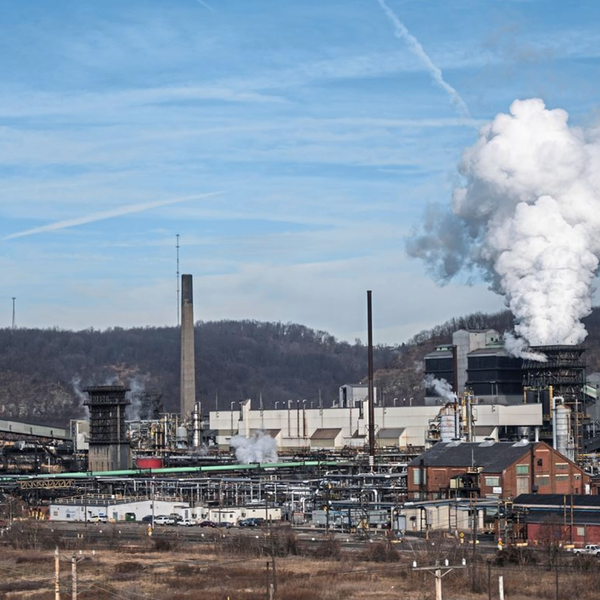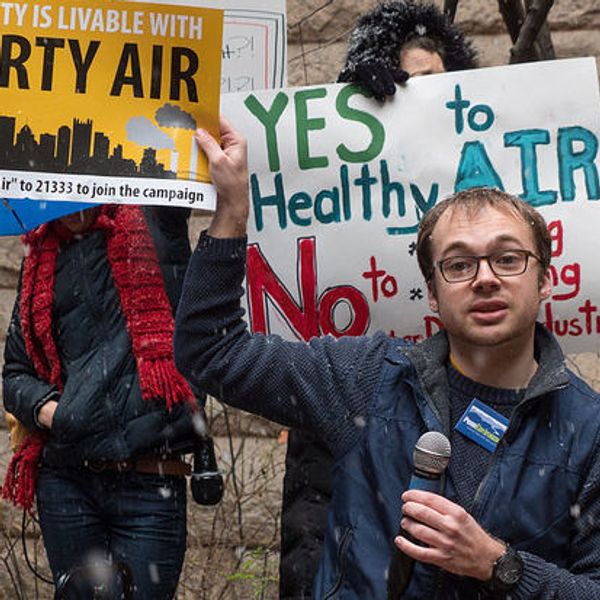PITTSBURGH—For the second year in a row, Allegheny County, Pennsylvania, was the only U.S. county outside of California to receive all F's in the American Lung Association's national air quality report card.
The annual report gave Allegheny County F grades for ozone, daily particulate matter levels and long-term particulate matter levels. Particulate matter pollution causes higher rates of asthma and lung cancer, decreased lung function in children, and increased hospital admissions and premature death due to heart attacks and respiratory illness.
"Particle pollution is made of soot or tiny particles that come from coal-fired power plants, industrial sources, diesel emissions, wildfires and wood-burning devices," Kevin Stewart, the American Lung Association's director of Environmental Health for Advocacy and Public Policy, said in a statement.
"These particles are so small that they can lodge deep in the lungs and trigger asthma attacks, heart attacks and strokes, and can even be lethal."

As with last year, of the nation's 25 most polluted cities, Pittsburgh was the only one east of the Mississippi.
On the West Coast, many of the spikes in air pollution were directly linked to wildfire events, whereas in the Pittsburgh area, emissions are the result of industrial polluters like U.S. Steel, which repeatedly violate clean air laws.
"Residents of Pittsburgh and the metro area should be aware that we're breathing unhealthy air, driven by local emissions, upwind sources, and extreme heat as a result of climate change, placing our health and lives at risk," Stewart said.
Year-round levels of particulate matter pollution dropped significantly nationwide since the last report. But like last year, Pittsburgh ran counter to that trend and got worse instead of better: The region fell from the 10th worst in the nation for year-round particulate matter pollution to the 7th worst in the nation.
This is the 20th year the American Lung Association published the "State of the Air" report, and the 20th time Allegheny County has received an F grade for particle pollution. As a result of air pollution from industrial sources, the Pittsburgh region has higher than average rates of both asthma and cancer.

In addition to tracking annual levels of particulate matter pollution, the report also tracks daily spikes in the pollutant, which can be fatal to people with respiratory or heart conditions like asthma and COPD (Chronic Obstructive Pulmonary Disease).
Again, instead of improving, the Pittsburgh metro area saw more days when short-term particle pollution reached unhealthy levels than in previous years.
In fact, this was Pittsburgh's worst performance since the 2014 report (which covered 2010-2012), and the report ranked the metro area at 10th worst in the nation for daily spikes in particulate matter pollution.
Previously, the region improved in ozone pollution for three years in a row, but this year saw worse results in that category, too. Compared to the 2018 report, which was the region's best ozone rating ever (despite still earning an F grade), the Pittsburgh metro area saw an increase in unhealthy days of high ozone in this year's report, worsening its ranking to 28th worst in the country.

Pittsburgh wasn't alone in worsening ozone levels. This year's report showed that ozone levels increased in most cities nationwide, in large part due to the record-breaking global heat experienced in the three years tracked in the report—2015 to 2017 were the hottest years recorded in global history due to climate change.
Warmer temperatures make ozone more likely to form and harder to clean up.
"Ozone especially harms children, older adults and those with asthma and other lung diseases," Stewart said. "When older adults or children with asthma breathe ozone-polluted air, too often they end up in the doctor's office, the hospital or the emergency room. Ozone can even shorten life itself."
























